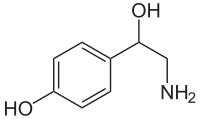
Photo from wikipedia
Increased blue light exposure has become a matter of concern as it has a range of detrimental effects, but the mechanisms remain unclear. Mitochondria absorb short wavelength light but have… Click to show full abstract
Increased blue light exposure has become a matter of concern as it has a range of detrimental effects, but the mechanisms remain unclear. Mitochondria absorb short wavelength light but have a specific absorbance at 420nm at the lower end of the human visual range. This 420nm absorption is probably due to the presence of porphyrin. We examine the impact of 420nm exposure on drosophila melanogaster mitochondria and its impact on fly mobility. Daily 15 mins exposures for a week significantly reduced mitochondrial complex activities and increased mitochondrial inner membrane permeability, which is a key metric of mitochondrial health. Adenosine triphosphate (ATP) levels were not significantly reduced and mobility was unchanged. There are multiple options for energy/time exposure combinations, but we then applied single 420nm exposure of 3h to increase the probability of an effect on ATP and mobility, and both were significantly reduced. ATP and mitochondrial membrane permeability recovered and over corrected at 72h post exposure. However, despite this, normal mobility did not return. Hence, the effect of short wavelengths on mitochondrial function is to reduce complex activity and increasing membrane permeability, but light exposure to reduce ATP and to translate into reduced mobility needs to be sustained.
Journal Title: PLoS ONE
Year Published: 2021
Link to full text (if available)
Share on Social Media: Sign Up to like & get
recommendations!